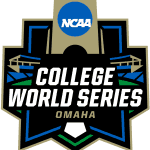 Just like March Madness, the NCAA College World Series functions through a bracket. Fans interested in college baseball betting entertainment can download their own version of the bracket to help follow along and potentially make some money off a winning combination.
Just like March Madness, the NCAA College World Series functions through a bracket. Fans interested in college baseball betting entertainment can download their own version of the bracket to help follow along and potentially make some money off a winning combination.
However, it is important to understand how the bracket works. Brackets serve more of an assistive guide when it comes to tracking the competition, but they also hold implications for those looking to bet on the College World Series.
For instance, when the original brackets are laid out, sportsbooks will base their college baseball odds on the projected victors according to the matchups. This article provides helpful insight into CWS brackets so you can be best prepared for the upcoming postseason.
Regionals – The First Bracket Column
The NCAA chooses which sites will host the College Baseball Regionals based on a number of factors. They have to consider the types of facilities present and whether they can adequately host the crowd and media presence.
They also measure how much revenue could potentially be drawn based on the location and teams present. 16 regions are chosen, each region consisting of 4 teams.
The 4 teams are divvied up by seed numbers. In most cases, the #1 seeded team hosts. In other cases, the NCAA will choose the closest neutral territory location with the proper facilities.
Regional play is based on a double-elimination format. This means it takes 2 losses for a team to be eliminated. The 4 teams play until only 1 remains. That team will move on to what is known as the Super Regionals.
Super Regionals – When Opposing Regions Collide
Once the 16 teams have been narrowed down to 8, those schools move on to the next phase of the NCAA baseball playoffs.
These are known as the Super Regionals. When the original 16 teams are seeded, 8 of which receive “national seeds,” which guarantee them a hosting spot in the event they advance to the Super Regional stage.
In the event of 2 non-national seeded teams advancing to a Super Regional, 2 other locations will put in bids to host. The format of the Super Regional round differs from the Regionals in that it moves to a best-of-3 series.
This way, teams can still have 2 losses and remain in contention. In the Super Regionals, 2 regions are paired up against each other in a predetermined selection (by the NCAA).
The Omaha 8
The final 8 teams head over to Omaha, Nebraska, for the famous College Baseball World Series. These 8 teams are randomly divided up into 2 separate brackets.
The format switches back over to double-elimination until 2 teams are left. In the event of series ties, additional games will be played out until a winner is determined. The final 2 teams play in the CWS Final, a best-of-3 series.
Minding The Format Switches
You may have noticed there is a rotation in formats with the NCAA baseball postseason. Games either are either conducted in a double-elimination or best-of-3 series format. At first glance, both may appear the same, but there is a subtle difference that changes things on multiple levels.
The double-elimination format is held in the Regionals and again the first stage of the College World Series. It is a pretty simple format—2 losses and you’re out. The reason why the double-elimination format is used because it weeds out losers faster.
For example, in the Regionals, brackets include 4 separate teams. Teams do not have much room for error in a double-elimination system and they may not even be able to play each team.
The same can be said for the initial stage of the College World Series. The best-of-3 format is better used for a series like you would expect to find in the MLB World Series, which is a best-of-7. In the Super Regionals and CWS Final, you only have one opponent.
A best-of-3 series is more competitive than a double-elimination format because in the latter format you can bounce back against a new opponent. In a best-of-3, the teams know each other well and must battle it out using very strategic approaches.
Double elimination brackets could feature 1 good team and 3 awful ones, giving the advantage to the better team. Best-of-3 tournaments often feature 2 very good teams against each other.
How Do CWS Odds Fit Into The Bracket?
When the Regional matchups are set, your NCAA baseball postseason bracket officially begins. Oddsmakers look at these brackets in accordance with the Regional schedules before making their odds projections.
If a favorited team has an easy draw in a regional bracket, the odds of them go up. If an underdog team is up against some high-ranking teams, the CWS odds of them winning are low. The trend continues as the postseason progresses.
For more information about college baseball odds and betting lines check out our guide to College baseball betting lines and odds.
A Look At The Bracket
We’ve included a link to the 2021 CWS bracket to give you a visual representation of what to expect. Use this as a model for considering any futures bets you plan to place for the 2022 college baseball season:
You can also download the printable CWS bracket here.
